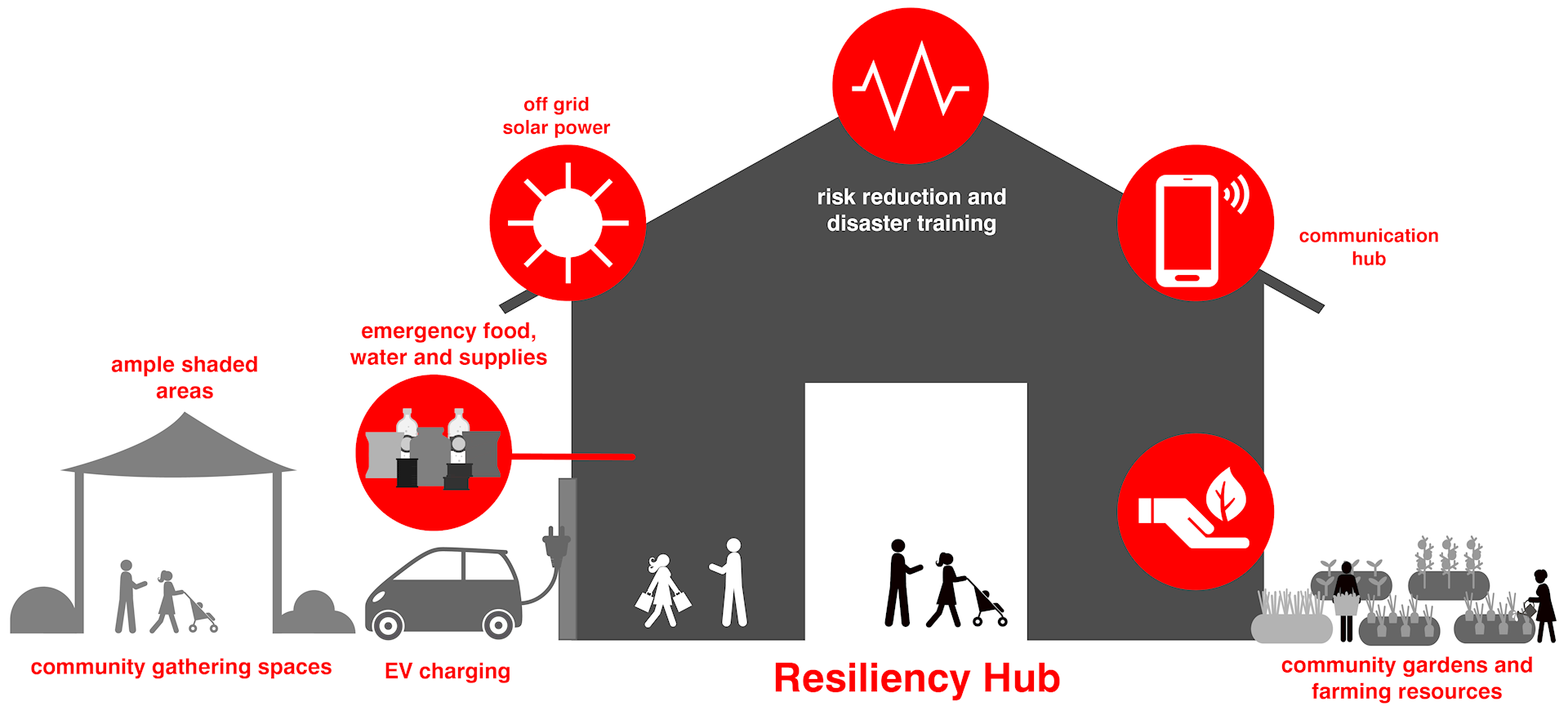
In 2023, the U.S. had to “hunker down” to 28 separate billion-dollar weather and climate disasters. The total cost: $92.9 billion. As the impacts of climate change and extreme weather events become increasingly severe and frequent, communities across the globe are exploring ways to enhance their resilience. One such innovation is the development of resilience hubs — centers that provide essential services and support to communities during emergencies while serving as community resources during normal times.
Understanding the hubbub
A resilience hub is a community-centered facility designed to provide essential services and resources during emergencies, such as natural disasters, power outages or extreme weather events. Resilience hubs can be new buildings or retrofitted structures like schools, community centers or libraries. Their dual-purpose nature — serving daily community needs and emergency functions — makes them unique and essential in modern urban planning.
During emergencies, they transform into critical lifelines, providing shelter, communication channels and access to essential resources. They are typically equipped with supplies like food, water, first aid and backup power. They help disseminate crucial updates and instructions from authorities and often act as centers for volunteer coordination, enabling the community to organize and respond collectively to crises. There are more than 250 resilience hubs across the U.S.

Three key considerations for resilience hub development
Location: The hub’s location is crucial for its effectiveness. Accessibility, proximity to vulnerable populations and environmental safety, while ensuring easy access by public transportation and emergency services, are important to take into account. Community facilities that are well-known and trusted can seamlessly fall into this role, but necessary assessments must be performed to determine structural resilience.
Energy systems and renewable integration: Resilience hub retrofits should incorporate energy efficiency upgrades and integrated emergency energy design. Many newer resilience hubs incorporate renewable energy systems, reducing operational energy costs and ensuring continued functionality during extended outages. Resilience hubs may also be connected to local microgrids, enabling independent operation from the main grid during emergencies. To maintain essential services and communications, it’s crucial to properly size and test the emergency power systems for reliable performance during outages.
Community-oriented and -driven: The development of a resilience hub should be deeply rooted in the community it serves. Engage with residents and stakeholders from the outset, incorporating their input into the hub’s planning, design and operation. By involving the community in decisions such as the location, services offered and management, the hub can better address local challenges and become a focal point for resilience, social cohesion and empowerment.
The Urban Sustainability Directors Network (USDN) and the NAACP have developed valuable resources to help communities understand and implement resilience hubs. The USDN offers detailed toolkits and guides that provide practical steps for planning, designing and operating resilience hubs, with a focus on sustainability and equity, while the NAACP toolkit emphasizes the importance of social justice in resilience planning, offering frameworks that ensure hubs serve the needs of vulnerable populations.
Whether through new construction or retrofitting facilities, resilience hubs are likely to become an integral part of our communities. As the concept continues to evolve, the adoption of best practices and standards, coupled with community-driven approaches, will be essential to ensure resilience hubs can meet the challenges of the 21st century.
Contact Amanda Polematidis at apolematidis@hanson-inc.com to learn more about how a resilience hub can serve your community.